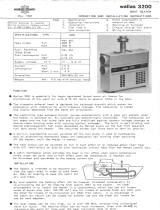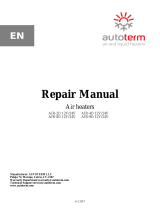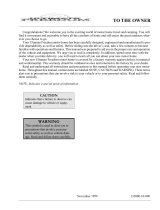
- 1 -
Safety - Safety Instructions for water heaters 1 .....................................................................................
Technical information - Supplies and accessories 2 ..............................................................................
Technical information - Technical data Spartan & Viking Water 3 ..................................................
Technical information - Operation description 3 .....................................................................................
Technical information - Things to note before Installation 5 ............................................................
Technical information - Heater system dimensioning 6 .......................................................................
Installation - Fastening the devices 8 ..........................................................................................................
Installation - General electrical connections 10 ......................................................................................
Installation - Product specific electrical connections 11 ......................................................................
Installation - Coolant connections 13 ...........................................................................................................
Installation - Installation example 1 14 .......................................................................................................
Installation - Installation example 2 15 .......................................................................................................
Installation - On-demand hot water accumulator 16 .............................................................................
Installation - Bleeding and filling system with coolant 17 ..................................................................
Exhaust gas connections - Exhaust gas connections coaxial 18 ......................................................
Exhaust gas connections - Closable lead-through 2460 (Viking water only) 19 .......................
Exhaust gas connections - Side lead-through 2467 20 .........................................................................
Exhaust gas connections - Deck lead-through 5300 21 ........................................................................
Exhaust gas connections - Stern lead-through 5400 22 ......................................................................
Exhaust gas connections - Drainage lock 2471 22 ..................................................................................
Exhaust gas connections - Insulation kit 2461 23 ...................................................................................
Fuel connections - Fuel connections 24 .......................................................................................................
Fuel connections - Fixed tank connection 30011 25 ..............................................................................
Fuel connections - Separate tank connection 367200 26 ....................................................................
Fuel connections - Solenoid valve 30012 27 .............................................................................................
Fuel connections - Tank external filters 30015, 30016 28 ..................................................................
Fuel connections - Selecting the fuel 29 .....................................................................................................
RV Fuel connections - Tank connection 30018 30 ...................................................................................
Operation - Device operation 31 .....................................................................................................................
Control Panel - Control Panel Installation 33 ............................................................................................
Control Panel - Basic features for water heaters 34 ..............................................................................
Control Panel - Connecting with the Remote application 40 ..............................................................
Control Panel - Software update 45 ..............................................................................................................
Control Panel - Error Codes 46 .........................................................................................................................
Important information - Installation check list 48 ..................................................................................
Important information - Maintenance recommendations 50 .............................................................
Important information - Warranty terms 51 ..............................................................................................
Important information - Disclaimers 52 .......................................................................................................




























